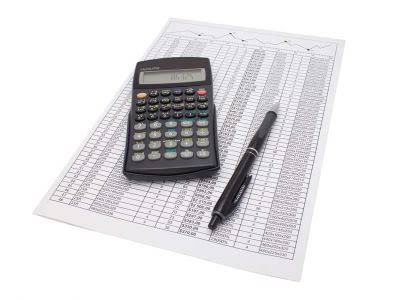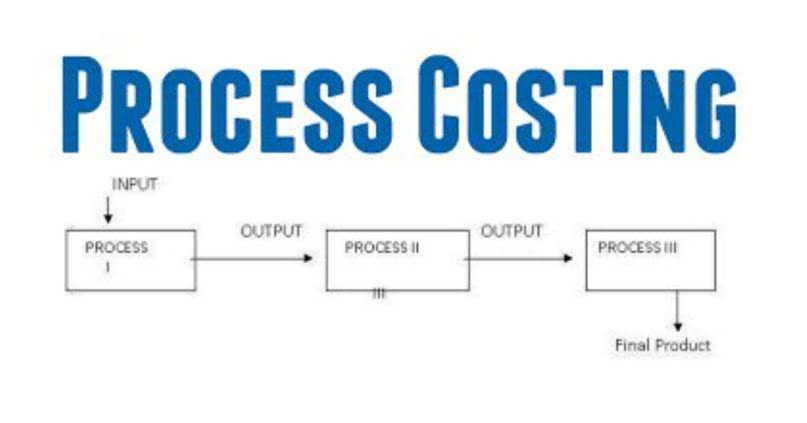The Working Capital Ratio and a Company’s Management
Content

As this table shows, if the liabilities of a company increase, then the working capital ratio decreases. Conversely, if the liabilities of a company decrease, then the working capital ratio increases. Likewise, if the assets of a company increase, then the working capital ratio increases, but if the assets of a company decrease, then the working capital ratio decreases. A higher working capital ratio shows a company has more ability to pay its debt, making it less risky to creditors and investors. The information featured in this article is based on our best estimates of pricing, package details, contract stipulations, and service available at the time of writing. Pricing will vary based on various factors, including, but not limited to, the customer’s location, package chosen, added features and equipment, the purchaser’s credit score, etc. For the most accurate information, please ask your customer service representative.
- An example of the working capital ratio would be if a business had current assets of $1,700,000 and current liabilities of $2,000,000.
- The content is not intended as advice for a specific accounting situation or as a substitute for professional advice from a licensed CPA.
- This presentation is helpful to creditors and investors, as it allows them to get more data to analyze the firm.
- Ultimately, a “good” current ratio is subjective and depends on your business and the industry in which you operate.
Remember, we said that a value between 1.2 and 2 is a good measure, where 1 means you are at break-even. It indicates poor to non-existent liquidity and the inability to pay current liabilities.
Changes in Working Capital Ratio
If it drops below 1.0 you’re in risky territory, known as negative working capital. With more liabilities than assets, you’d have to sell your current assets to pay off your liabilities. Business owners, accountants, and investors all use working capital ratios to calculate the available working capital, or readily available financial assets of a business. It’s an important marker because it can be used to gauge the company’s ability to handle its short-term financial obligations such as payroll, debts, and other bills.
What is low working capital?
Low working capital can often mean that the business is barely getting by and has just enough capital to cover its short-term expenses. However, low working capital can also mean that a business invested excess cash to generate a higher rate of return, increasing the company's total value.
Companies that are cyclical or seasonal generally have higher working capital requirements than year-round businesses. In broader terms, working capital is also a gauge of a company’s financial health. The larger the difference between what you own and what you owe short-term, the healthier the business.
How Do You Calculate Working Capital?
Investopedia requires writers to use primary sources to support their work. These include white papers, government data, original reporting, and interviews with industry experts. We also reference original research from other reputable publishers where appropriate. You can learn more about the standards we follow in producing accurate, unbiased content in oureditorial policy. Some analysts believe that the ideal working capital ratio is between 1.5 and 2.0, but this may vary from industry to industry.
- With that, this account gauges your business liquidity and operational efficiency.
- Companies, like Wal-Mart, are able to survive with a negative working capital because they turn their inventory over so quickly; they are able to meet their short-term obligations.
- Working capital ratios between 1.2 and 2.0 indicate a company is making effective use of its assets.
- Cash, AR, and inventory are typically found in your company’s current assets column.
- Short-term liabilities include accounts payable — money you owe vendors and other creditors — as well as other debts and accrued expenses for salary, taxes and other outlays.
- From 2009 to 2014, the working to gross revenue ratio ranged from 0.22 in 2013 to 0.43 in 2010.
This presentation makes it easier for investors and creditors to analyze a business. In financial statements, current assets and current liabilities always come before long-term assets and long-term liabilities. This calculation shows the portion of a company’s current assets that will cover its current liabilities. It is a measure of business liquidity, calculated simply by dividing your business’s total current assets by its total current liabilities. In other words, it measures the health of your company’s short term finances.
More resources
The calculation is essentially a comparison between current assets and current liabilities. Working capital refers to the difference between current assets and current liabilities, so this equation involves subtraction. The net working capital ratio, meanwhile, is a comparison of the two terms and involves dividing them. Considering this equation estimates the current assets as a percentage of current liabilities, it should be no surprise that the higher ratio is preferred over the lower one. If the ratio is 1, it shows that the current assets equal current liabilities, and it’s considered middle ground. So, the company would have to sell all the current assets to be able to repay its current liabilities. Current assets such as cash equivalents, cash, and marketable securities are the best options when it comes to paying current liabilities.
Brainyard delivers data-driven insights and expert advice to help businesses discover, interpret and act on emerging opportunities and trends. Ready to speak with a ScaleFactor expert about how to take advantage of your business’ finances? Among the large utilities with the lowest working capital ratios are American Electric Power Co. Smaller utilities in this group are PNM Resources Inc., Hawaiian Electric Industries Inc., ALLETE Inc., Avista Corp. and El Paso Electric Co. Also in the lowest group are two gas companies, Chesapeake Utilities Corp. and South Jersey Industries Inc. We note that no stand-alone gas companies were among the utilities with the highest working capital ratios. For many companies, the more products sold, the less cash is available.
The anatomy of financial bubbles, crashes & where we stand today
Therefore, the high working-capital ratio would mask underlying liquidity problems. If you have enough current assets to quickly pay current liabilities, you can make employees and creditors happy.
Negative Working CapitalNegative Working Capital refers to a scenario when a company has more current liabilities than current assets. It implies that the available short-term assets are not enough to pay off the short-term debts.
Example- Working Capital vs Current Ratio
With working capital management, you can do a better job of tracking receivables. You must determine how much receivables to collect to sustain your operations. In turn, you will be more cautious when extending credit to your customers.
When current ratio is greater than 1– let’s say around 1.1 to 2, it indicates that company has enough resources to pay-off its current liabilities. Whereas, if the business had $1,700,000 in current liabilities and $1,700,000 in current assets, it would have a current ratio of one.
If you’re here, it’s because you are most likely curious about what the working capital ratio is and how it works. Also called the current ratio, the working capital ratio is a liquidity ratio, and it’s used to estimate a company’s ability to repay its current liabilities with current assets. Current liabilities are best paid with current assets like cash, cash equivalents, and marketable securities because these assets can be converted into cash much quicker than fixed assets. The faster the assets can be converted into cash, the more likely the company will have the cash in time to pay its debts. The rapid increase in the amount of current assets indicates that the retail chain has probably gone through a fast expansion over the past few years and added both receivables and inventory. The acquirer elects to greatly reduce her offer for the company, in light of the likely prospect of an additional cash infusion in order to pay off any overdue payables.

Discover the formula for the working capital ratio and learn how it is used by businesses. Current liabilities are the amount of money a company owes, such as accounts payable, short-term loans, and accrued expenses, that are due for payment within a year. A company can increase its working capital by selling more of its products.
Effects of Low Working Capital Turnover
The values of the denominator and numerator of net working capital ratio are available on the balance sheet of the company. Current assets are those items on your balance sheet that can be converted to cash within one year or less.

Ultimately, a “good” current ratio is subjective and depends on your business and the industry in which you operate. What’s important is keeping an eye on this ratio regularly to ensure it stays within your comfort zone. All three subgroups, except gas, showed an uptick in this measure in the first quarter of 2020. The average subgroup results for the acid test ratio were somewhat different, https://www.bookstime.com/ with the multi-utility again the highest but the electric the lowest. All three subgroups saw an improvement in this measure in the first quarter of 2020, and the gas subgroup posted the largest percentage increase at 17.8%. Chris Rauen has been educating procurement and finance professionals on accounts payable automation and procure-to-pay transformation for more than 20 years.
From 2009 to 2014, the working to gross revenue ratio ranged from 0.22 in 2013 to 0.43 in 2010. Since 2015, the working capital to gross revenue ratio has been below 0.20. The 2022 projected ratio is 0.18, which is below Working Capital Ratio 0.20, indicating that some farms may be having difficulty repaying loans. So, Working Capital is $10,000 which means that after paying all obligations, Jenna’s Collection has left $10,000 in its short-term Capital.

Similarly, the average current ratio dropped from 2.65 in 2012 to 1.58 in 2018. The average ratio in 2019 increased to 1.60, and then increased to 1.97 in 2020 and to 2.43 in 2021.
A ratio below 1 is significantly risky for creditors and investors. It proves the company isn’t operating efficiently, meaning, it cannot settle its obligations properly. A ratio below than 1 is always negative and is aptly called negative working capital. On the other hand, a ratio higher than 1 shows the company is capable of paying all its liabilities, while still keeping some current assets.
ZİYARETÇİ YORUMLARI
BİR YORUM YAZIN